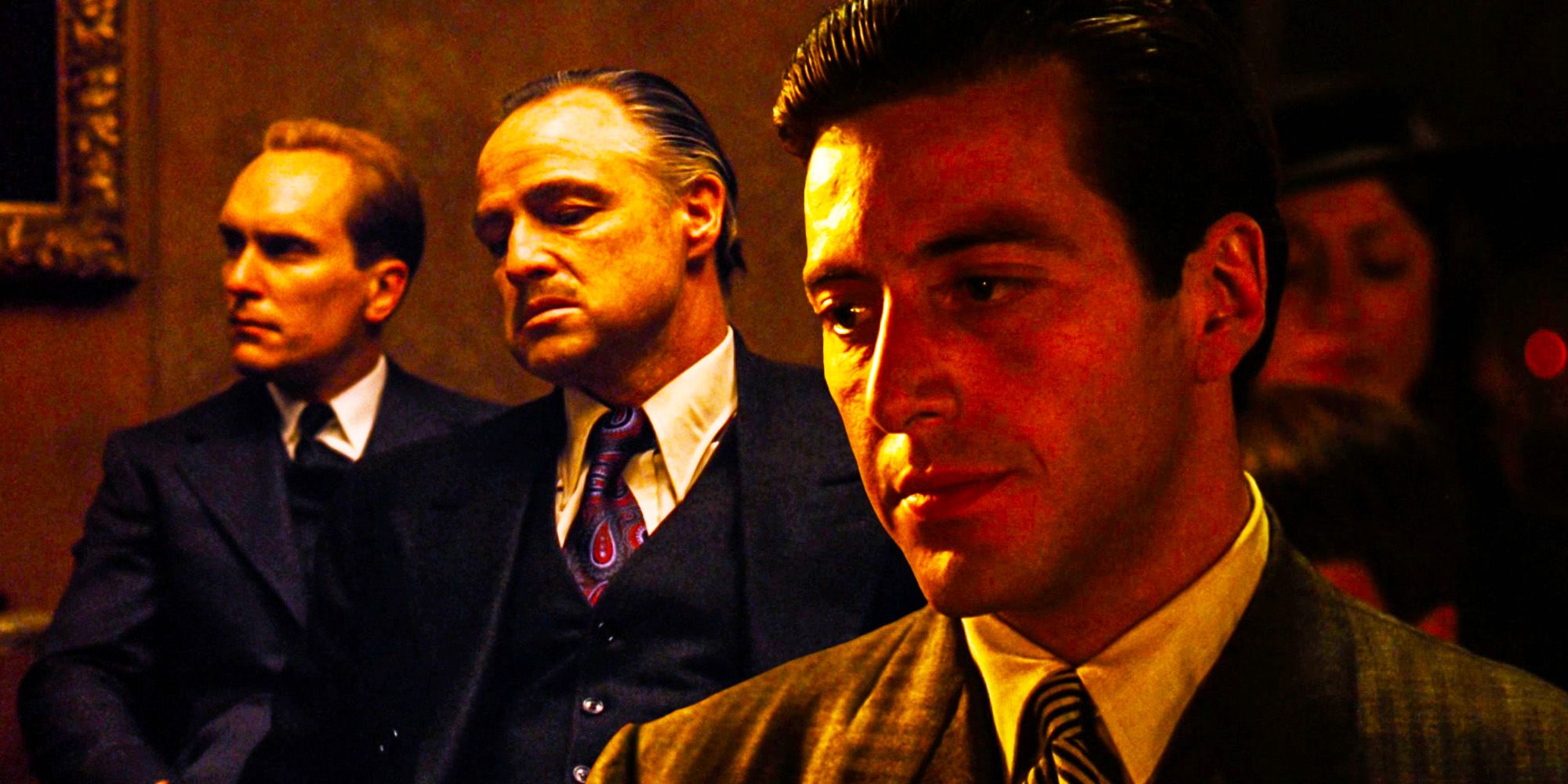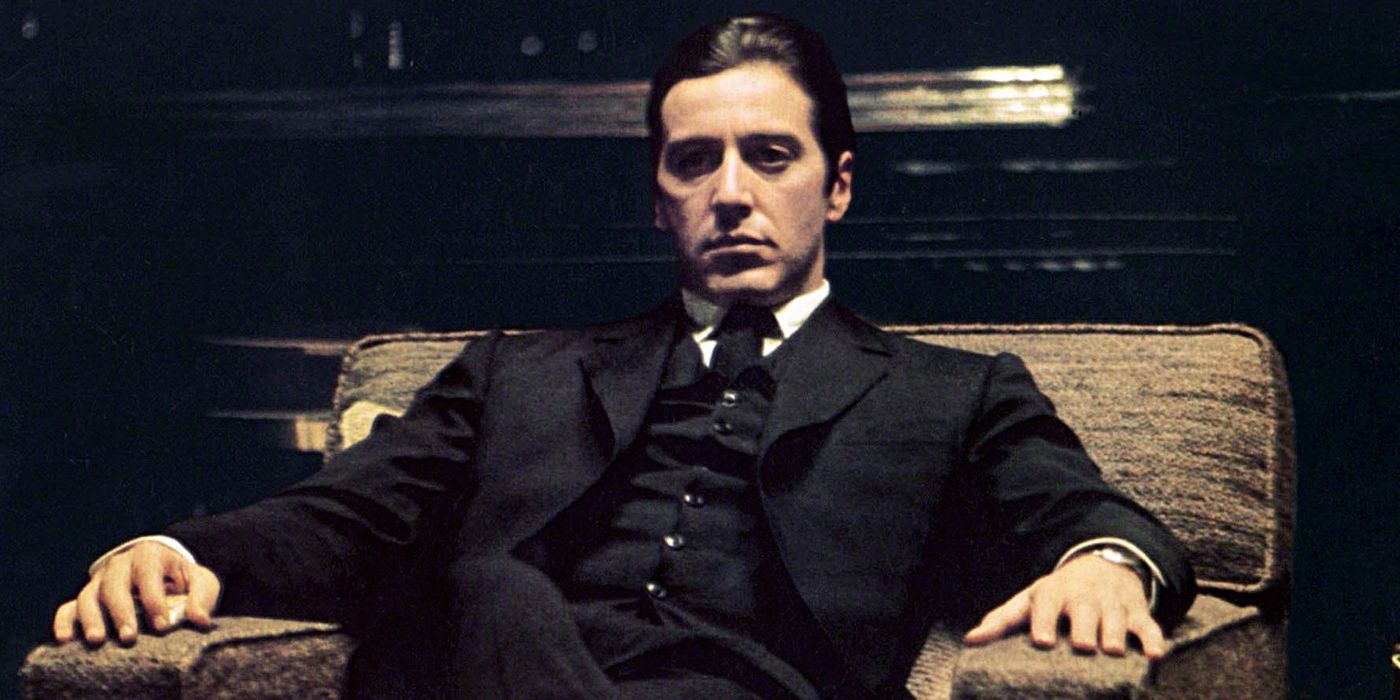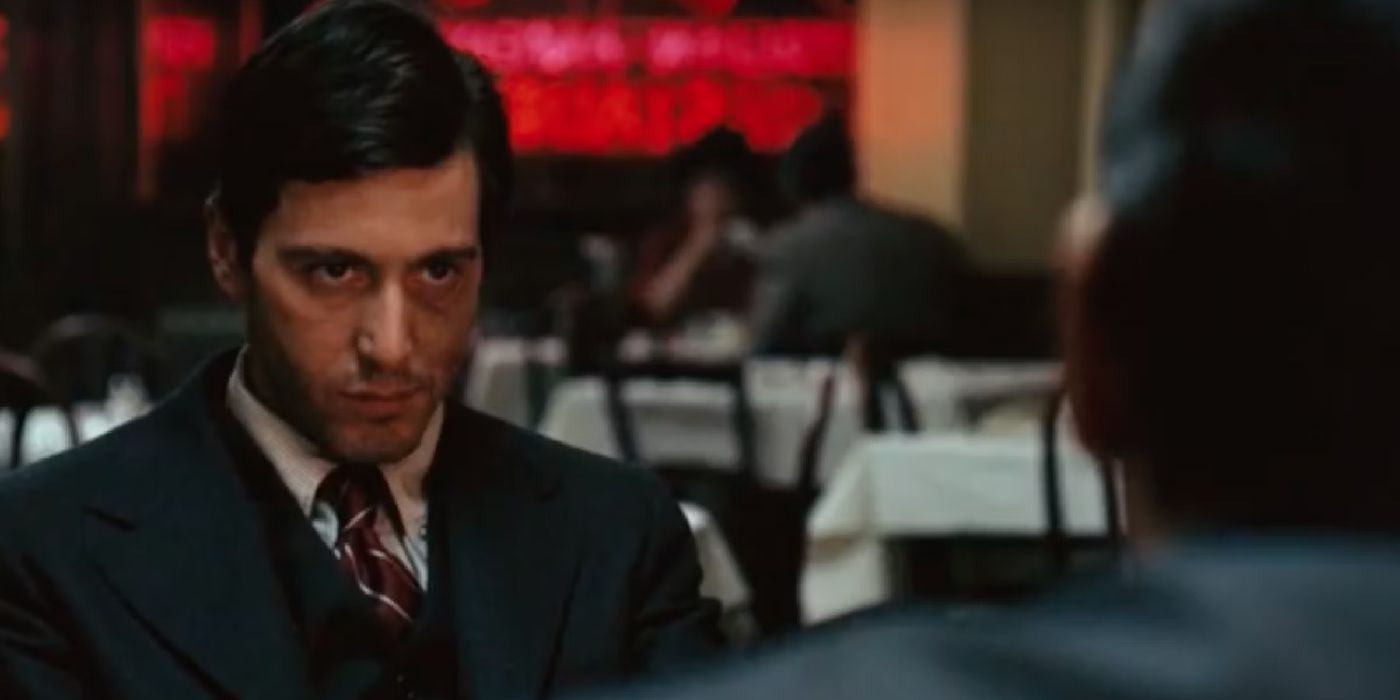One key scene in The Godfather saved Al Pacino's job and the movie itself. Francis Ford Coppola's film, based on the Mario Puzo novel of the same name, is commonly ranked as one of the greatest films ever made. It tells the story of one man's transformation from "good guy" to "bad guy." Michael Corleone, played perfectly by Al Pacino, was the second-youngest son of Vito Corleone and the main protagonist of the epic story. Pacino's performance, along with Coppola's direction, are two key elements that made The Godfather the iconic movie it has become. However, both may not have happened were it not for one particular scene.
During the casting process for The Godfather, Coppola, who had seen Pacino in The Panic At Needle Park (his first starring role in a film), wanted him for the role of Michael Corleone. Paramount Pictures however wanted a big-name actor. Leave the Gun, Take the Cannoli, by Mark Seal, detailed how the studio didn't think Pacino was right for the part. Under pressure for his casting choice, Coppola moved up the shooting of the now iconic restaurant scene in which Michael kills Corleone Family rival Virgil Sollozzo and Police Captain Mark McCluskey. Pacino's performance was visceral. The viewer knew that violence was coming, and the rawness of it was juxtaposed against Michael's controlled emotions. Once the studio saw Pacino in this scene, they relented, allowing Coppola's vision for the film to come to fruition.
The Godfather's Restaurant Scene Saved Coppola Too
The Godfather's director, Francis Ford Coppola, was also under constant threat of being axed by the studio. They objected to his casting choices and his selection of Gordon Willis as cinematographer. Coppola battled with Paramount over the film's length, with Coppola's 175 minutes being far in excess of the 120 minutes dictated by the studio. Coppola wanted the film to be darker, slower, and more intentional, while Paramount wanted it brighter with sex, drugs, and violence, a low-budget crime drama. Both parties were stressed, and Paramount went so far as to have stand-in directors on set at the ready in case they fired Coppola. However, the scene that saved Pacino's job also saved Coppola's. The studio realized that Coppola was on to something after the restaurant scene, subsequently giving him more freedom to implement his vision.
Why The Godfather's Restaurant Scene Is So Good
The restaurant scene in The Godfather is studied to this day. While Michael was seated at the table with Sollozzo and Captain McCluskey, short takes were alternated with long takes in a rhythm of apprehension, with the editing building the tension to a fever pitch. Michael's frenzied search for the gun in the restroom and his return to the table crescendoed to the moment when he got to his feet and fired. The absence of music for the better part of the scene accentuated the sound of the passing train, which in turn served to highlight the turmoil in Michael Corleone's mind as he was about to cross the threshold into murderer. It was a scene of violence in that two people were shot and killed, but there was also violent intention that was conveyed in the way that Al Pacino as Michael Corleone silently simmered. His body language and icy stare showed menace in a man who, up to that moment, wanted nothing to do with such things, yet in those six or so minutes, he became inextricably immersed in it. This complexity explains The Godfather's restaurant scene's enduring legacy.
The making of The Godfather was fraught with conflict and indecision, yet the end product is one of the most influential movies of all time. Both Pacino and Coppola were under the constant threat of being dismissed. Paramount Pictures ultimately decided to relent. The film went on to pull in over $740 million dollars, and both Pacino and Coppola became respected names in the industry. Were it not for The Godfather's restaurant scene, it's likely that this legacy would have been very different.



